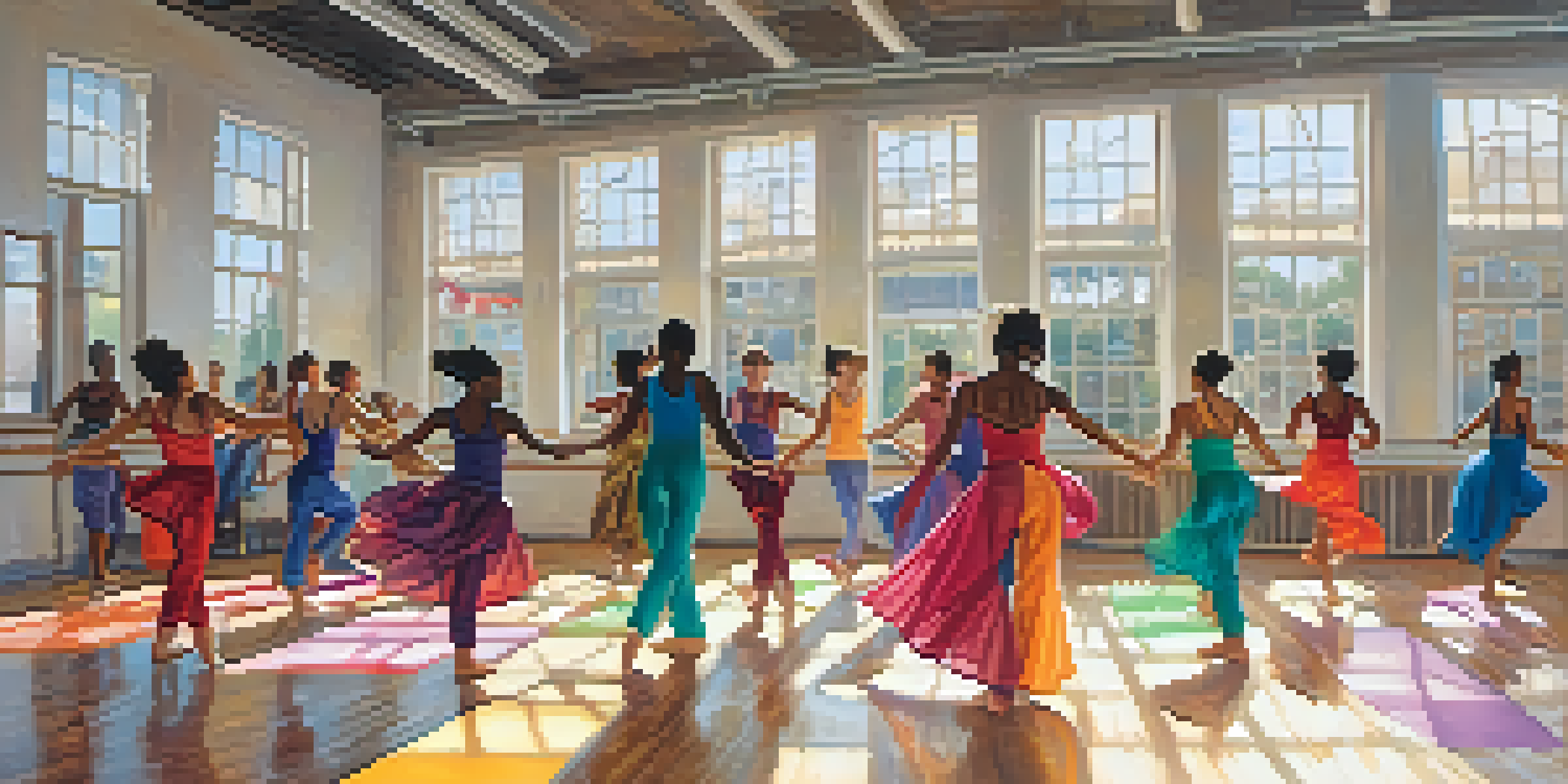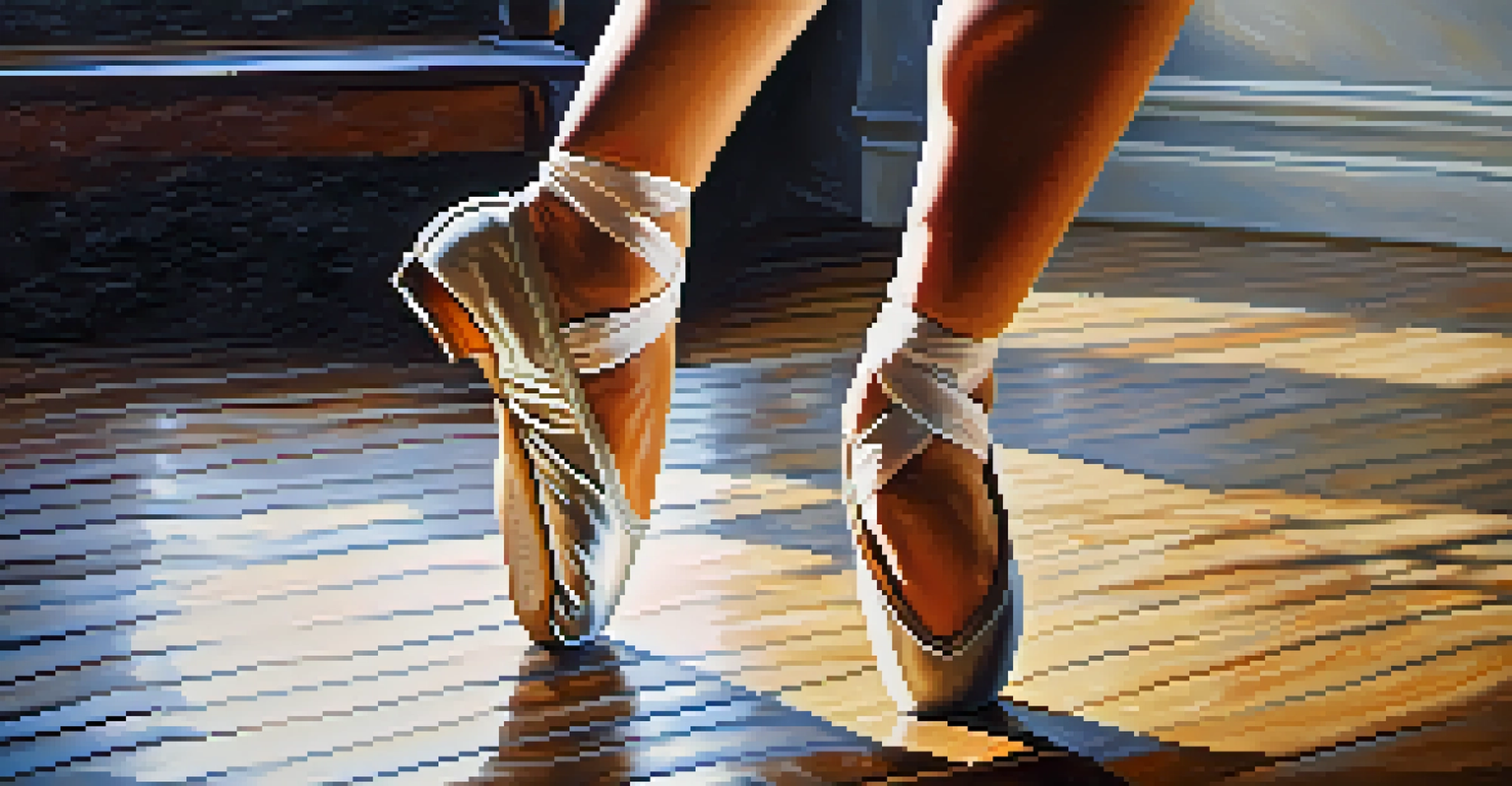Dance Competitions in the Age of Social Media Fame

The Rise of Social Media in Dance Culture
In recent years, social media has transformed the dance landscape, connecting dancers from all corners of the globe. Platforms like Instagram and TikTok provide a stage for talent, allowing dancers to showcase their skills and creativity without the need for traditional avenues. This democratization of dance has led to a surge in popularity for both amateur and professional dancers, often resulting in viral moments that captivate audiences.
Dance is the hidden language of the soul.
For many dancers, social media is not just a platform to share their work; it’s a vital tool for networking and building a personal brand. Many successful dancers owe their careers to the visibility gained through these platforms, where a single captivating performance can lead to sponsorships, collaborations, and even dance roles. The ability to reach a wider audience has empowered dancers to pursue their passion more earnestly.
Related Resource
However, this shift also brings pressure, as dancers now feel the need to constantly produce content that meets the expectations of their followers. The challenge lies in balancing the pursuit of social media fame with the love for dance itself, ensuring that the art form remains genuine and true to its roots.
The Impact of Viral Trends on Dance Competitions
Viral trends can significantly influence the choreography and style presented in dance competitions today. When a specific dance move or routine captures the public's imagination, it often becomes a staple in competitions, as dancers seek to replicate the success of viral sensations. This can lead to a homogenization of dance styles, where originality takes a backseat to what is currently trending.

Nonetheless, these viral trends also encourage innovation, as dancers look for fresh ways to put their unique spin on popular moves. The challenge for competitors is to strike a balance between tapping into these trends while still showcasing their individuality and creativity. A unique interpretation can elevate a routine, making it stand out amid a sea of similar performances.
Social Media Transforms Dance Culture
Platforms like Instagram and TikTok empower dancers, enabling them to showcase their talents and build personal brands beyond traditional avenues.
Additionally, judges at competitions are increasingly aware of the influence of social media and how it shapes expectations. They often seek out performances that not only excel technically but also resonate with the audience, which is heavily influenced by what is trending online.
Building a Personal Brand Through Dance
In today's digital age, building a personal brand is essential for dancers looking to make a mark in the industry. This involves curating an online presence that reflects their style, personality, and values, allowing them to connect with fans and potential employers. By sharing behind-the-scenes content, training routines, and personal stories, dancers can create a more relatable image that resonates with their audience.
The dance is a poem of which each movement is a word.
A strong personal brand can open doors to opportunities beyond competitions, including sponsorship deals, partnerships, and performance gigs. Dancers who effectively leverage their social media presence can attract the attention of companies and choreographers looking for fresh talent. This means that every post, video, and interaction matters in shaping public perception.
Related Resource
However, the pressure to maintain a polished image can be daunting. Dancers must navigate the fine line between authenticity and the curated persona they present online, ensuring that they remain true to themselves while still appealing to their audience.
The Role of Audience Engagement
Audience engagement has taken on a new dimension in the world of dance competitions, thanks to social media. Dancers can now interact with their fans in real-time, receiving immediate feedback on their performances and building a loyal following. This engagement can be a powerful motivator, encouraging dancers to push their boundaries and explore new techniques.
Moreover, judges and competition organizers are increasingly considering audience reactions as part of the evaluation process. Social media metrics, such as likes, shares, and comments, can influence perceptions of a dancer's performance, which adds another layer of complexity to the competition dynamic. Dancers must not only impress the judges but also captivate the audience to secure their place in the spotlight.
Viral Trends Shape Dance Competitions
Viral dance trends influence choreography in competitions, pushing dancers to balance originality with popular styles to stand out.
This shift toward audience engagement also fosters a sense of community among dancers and fans alike. As they share their journeys, challenges, and successes, they create a supportive environment that celebrates the art of dance.
Navigating Competition Pressure in the Digital Age
With the rise of social media fame comes an increase in competition pressure. Dancers feel compelled to keep up with their peers, often comparing their journeys to others' highlight reels. This can lead to feelings of inadequacy and anxiety, as the quest for perfection overshadows the joy of dancing.
To combat this pressure, many dancers are focusing on self-care and mental health, recognizing the importance of maintaining a healthy mindset. Engaging in positive self-talk, setting realistic goals, and finding joy in the process can help dancers navigate the challenges of competition while staying true to their passion.
Related Resource
Additionally, fostering a supportive community can alleviate some of this pressure. By connecting with fellow dancers, individuals can share their struggles and victories, reminding each other that everyone has their unique journey, regardless of what is portrayed online.
The Future of Dance Competitions in a Digital World
As technology continues to evolve, the future of dance competitions looks promising yet unpredictable. Virtual competitions have emerged, allowing dancers from around the world to participate without geographical limitations. This opens up new opportunities for talent discovery and showcases a diverse range of styles and cultures.
However, with these changes come challenges. Maintaining the integrity of competitions while adapting to a digital format requires careful consideration. Organizers must find ways to ensure fair judging and audience engagement in a virtual environment, balancing the excitement of live performances with the reach of online platforms.
Community Engagement Enhances Support
Social media fosters real-time audience engagement, creating a supportive community that encourages dancers to share their journeys and challenges.
Ultimately, the future of dance competitions will likely involve a hybrid model, blending traditional elements with innovative approaches. This evolution will continue to shape the way dancers connect, compete, and thrive in an ever-changing digital landscape.
Celebrating Diversity in Dance through Social Media
Social media has become a powerful platform for celebrating diversity in dance. Dancers from various backgrounds are able to share their unique styles, traditions, and stories, enriching the dance community and inspiring others. This representation fosters greater inclusivity, allowing audiences to appreciate the beauty of different dance forms.
Moreover, the accessibility of social media empowers marginalized voices within the dance community to share their experiences and challenges. This can lead to important conversations about representation and equity in dance, pushing the industry to be more inclusive and supportive of all dancers.

As the dance community continues to embrace diversity, we can expect to see more varied styles and influences in competitions. This shift not only enhances the art form but also inspires future generations of dancers to express themselves authentically and fearlessly.